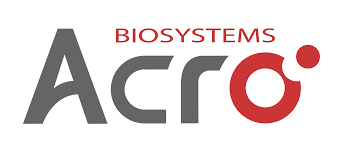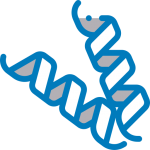
 Cynomolgus / Rhesus macaque CTLA-4 Protein, Fc Tag
Cynomolgus / Rhesus macaque CTLA-4 Protein, Fc Tag
CT4-C5256
200ug
Brand
ACROBiosystems
Description
Source :
Cynomolgus / Rhesus macaque CTLA-4, Fc Tag (CT4-C5256) is expressed from human 293 cells (HEK293). It contains AA Ala 37 – Ser 160 (Accession # G7PL88-1). In the region Ala 37 – Ser 160, the AA sequence of Cynomolgus and Rhesus macaque CTLA-4 are homologus.
Molecule : CTLA-4
Synonyms : CTLA4,CD152
Format : Powder
Category : Immune Checkpoint Proteins
Accession : XP_005574071.1
Storage : -20℃
Shipping condition : Powder,RT
Molecular Weight : 39.9 kDa
Characteristics :
This protein carries a human IgG1 Fc tag at the C-terminus. The protein has a calculated MW of 39.9 kDa. As a result of glycosylation, the protein migrates as 45-52 kDa under reducing (R) condition, and 90-105 kDa under non-reducing (NR) condition (SDS-PA
Endotoxin Level : Less than 1.0 EU per μg by the LAL method.
Buffer : 50 mM Tris, 100 mM Glycine, pH7.5
Description :
CTLA-4 (Cytotoxic T-Lymphocyte Antigen 4) is also known as CD152 (Cluster of differentiation 152), is a protein receptor that downregulates the immune system. CTLA4 is a member of the immunoglobulin superfamily, which is expressed on the surface of Helper T cells and transmits an inhibitory signal to T cells. The protein contains an extracellular V domain, a transmembrane domain, and a cytoplasmic tail. Alternate splice variants, encoding different isoforms. CTLA4 is similar to the T-cell co-stimulatory protein, CD28, and both molecules bind to CD80 and CD86, also called B7-1 and B7-2 respectively, on antigen-presenting cells. CTLA4 transmits an inhibitory signal to T cells, whereas CD28 transmits a stimulatory signal. Intracellular CTLA4 is also found in regulatory T cells and may be important to their function. Fusion proteins of CTLA4 and antibodies (CTLA4-Ig) have been used in clinical trials for rheumatoid arthritis.
References :
(1) Waterhouse P, et al., 1995, Science 270 (5238): 985–8.
(2) Magistrelli G, et al., 1999. Eur. J. Immunol. 29 (11): 3596–602.
(3) Rudd, CE. et al., 2009, Immunol. Rev. 229 (1): 12-26.
Application
Reactivity



